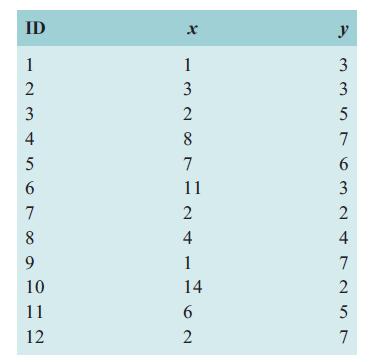Eliza, a family science student, asks married couples to count the number of arguments they have in
Question:
Eliza, a family science student, asks married couples to count the number of arguments they have in a month (x) and rate their children’s happiness on a scale from 1 to 7 (y), higher numbers indicating greater unhappiness. The data are below:

a. Calculate the correlation for Eliza’s data.
b. What is the null hypothesis for these data?
c. What is the degrees of freedom value for these data?
d. If Eliza conducts a two-tailed test, what should the critical values for an NHST be?
e. Should she reject or retain the null hypothesis?
f. Is the p-value (a) greater than .05, (b) between .01 and .05, or (c) less than .01?
g. What is the r2 value?
h. Draw a scatterplot that represents these data.
Step by Step Answer:

Statistics For The Social Sciences A General Linear Model Approach
ISBN: 9781107576971
1st Edition
Authors: Russell T. Warne





